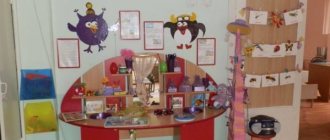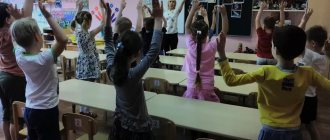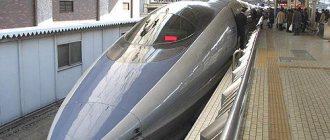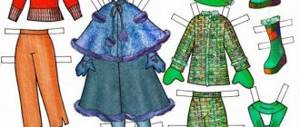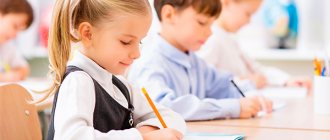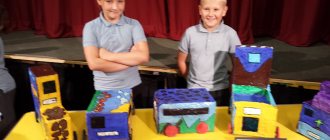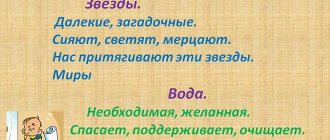Effective exercises for physical development
Exercises in GCD in the senior group must meet the following principles:
| Principle | Decoding |
| Step by step | Some exercises should be broken down into stages. For example, to master the long jump, children gradually learn to do it from a run, with a push with one foot from the mark, and later practice landing on both feet |
| Visibility | Visual cues and demonstration from different sides (side, front, back) play a huge role in mastering a new motor skill. Teachers recommend inviting all preschoolers to demonstrate one by one throughout the year. |
| Clarity | The teacher’s commands must be clear, understandable and not subject to misinterpretation. |
| Feedback | Children should receive objective and timely assessment of their actions. This not only motivates them for further work, but also teaches them to analyze their actions and give them the correct assessment. At the same time, feedback should be built taking into account the individual characteristics of children and their abilities |
To make the lessons more effective, the teacher uses various forms of organizing the process: general, group, individual. Individual work on physical development in the senior group is of great importance. It not only allows you to take into account the personality of the preschooler, but also corrects mistakes in a timely manner, preventing them from becoming fixed at the level of skills.
Important! Each ECD should include exercises to develop posture and prevent the development of flat feet.
The content of the GCD for physical development in the senior group should include all types of exercises aimed at working out different muscle groups. Monotony causes children to lose interest and the quality of work decreases.
Classification of exercises, examples and methods of their implementation:
| Exercise type | Peculiarity | Examples |
| Gymnastic | It affects specific areas, it is possible to dose and control the load. Often involve the use of equipment, musical accompaniment | Exercises with a ball, hoop, jump rope, practicing movements, flexibility and endurance exercises |
| Didactic games | Games for physical development in the senior group presuppose the presence of rules and a goal that must be achieved. Has a bright emotional coloring. Difficult to control load level | The most effective didactic games for physical development in the senior group: tag, mousetrap: the third wheel and others. Mousetrap. Two groups of children, one holding hands to form a circle, is a mousetrap. The rest are mice who must break out of the circle with all their might. |
| Sport games | It involves collective interaction, the presence of clear rules, and requires strong-willed efforts for the sake of a team victory. | Football, badminton, towns |
| Sport exercises | Allows you to instill strong-willed qualities, increase endurance and improve health, since most of them are carried out outdoors | Physical development outdoors in the senior group will not be comprehensive without sports exercises: sledding, cycling, skating, roller skating, swing games, swimming |
Of all the exercises, the gymnastic group is the most voluminous; it can be conditionally divided into several more subgroups, according to the direction of action.
Gymnastic exercises:
| Subgroup | Characteristic | Example and methodology |
| General development | Aimed at working out and strengthening the entire body or large sections (shoulder girdle, legs) | Leg swings, squats, stretching and joint flexibility exercises |
| Drillers | Develops spatial orientation skills and teaches how to successfully interact with a team | Line up: by height, one or two at a time, in a circle. Synchronized turns and full turn, moving in place, moving in a circle with an extended step |
| Basic movements | Affects the formation of posture, prevents the development of flat feet | Walking: children must master all types of walking, movements must be rhythmic and clear. Running: regular running, speed running and shuttle running. The teacher must practice not only the correct position, control breathing, but also require the correct position of the foot. Running on your toes with high knees strengthens the muscles of the legs and feet. Jumping: high, from a running start, long from a standing position. Working with the ball: throwing, catching, hitting the floor, throwing at a target |
| Balance exercises | Due to physiological changes, the role of balance exercises at this stage is enormous. They will allow the child to feel the changed center of gravity, and also develop strong-willed qualities and the ability to focus on a specific task. | Can be static: maintaining balance on one leg, on toes, in a certain position. Dynamic exercises, walking along a narrow bench, log, bumps |
A list of all kinds of exercises and games can be found in the methodological recommendations of Notkina N, Penzulaeva L, Filippova. S and others.
Features of physical development of children in older preschool age
By the fifth year of life, a person masters basic movements, knows how to coordinate his actions, and is open to further development of his physical skills. By this time, the physical parameters of the body also change significantly:
- growth doubles
- body weight increases three times,
- chest circumference increases,
- muscle mass increases significantly,
- The proportions of the body change, the limbs begin to stretch.
In addition to physical changes, significant changes occur in the child’s mind. By the time he moves to the senior group, he is able to correctly assess the task at hand and coordinate his actions based on it. The children's psyche during this period is very plastic, assimilation of new information and the formation of practical skills occurs easily and quickly. Therefore, psychologists and teachers consider physical development classes in the senior group to be very significant for the harmonious development of the individual. However, their effectiveness depends on how much they take into account the characteristics of the child’s body at this age and his needs.
Features of the physical development of children of senior preschool age:
- formation of posture and arch of the foot;
- development of the limbs (not only their strength increases, but also endurance);
- the center of gravity of the body changes due to the growth of the legs;
- the active development of the frontal lobes of the brain leads to the fact that the child can easily remember a chain of events;
- the body becomes more stable;
- the need for movement increases.
Planning the physical development of children in the senior group should be built taking into account these features. Improving motor skills at this age is of great importance and not only shapes health, but also serves as a stimulus for the intellectual and mental development of a harmonious personality.

